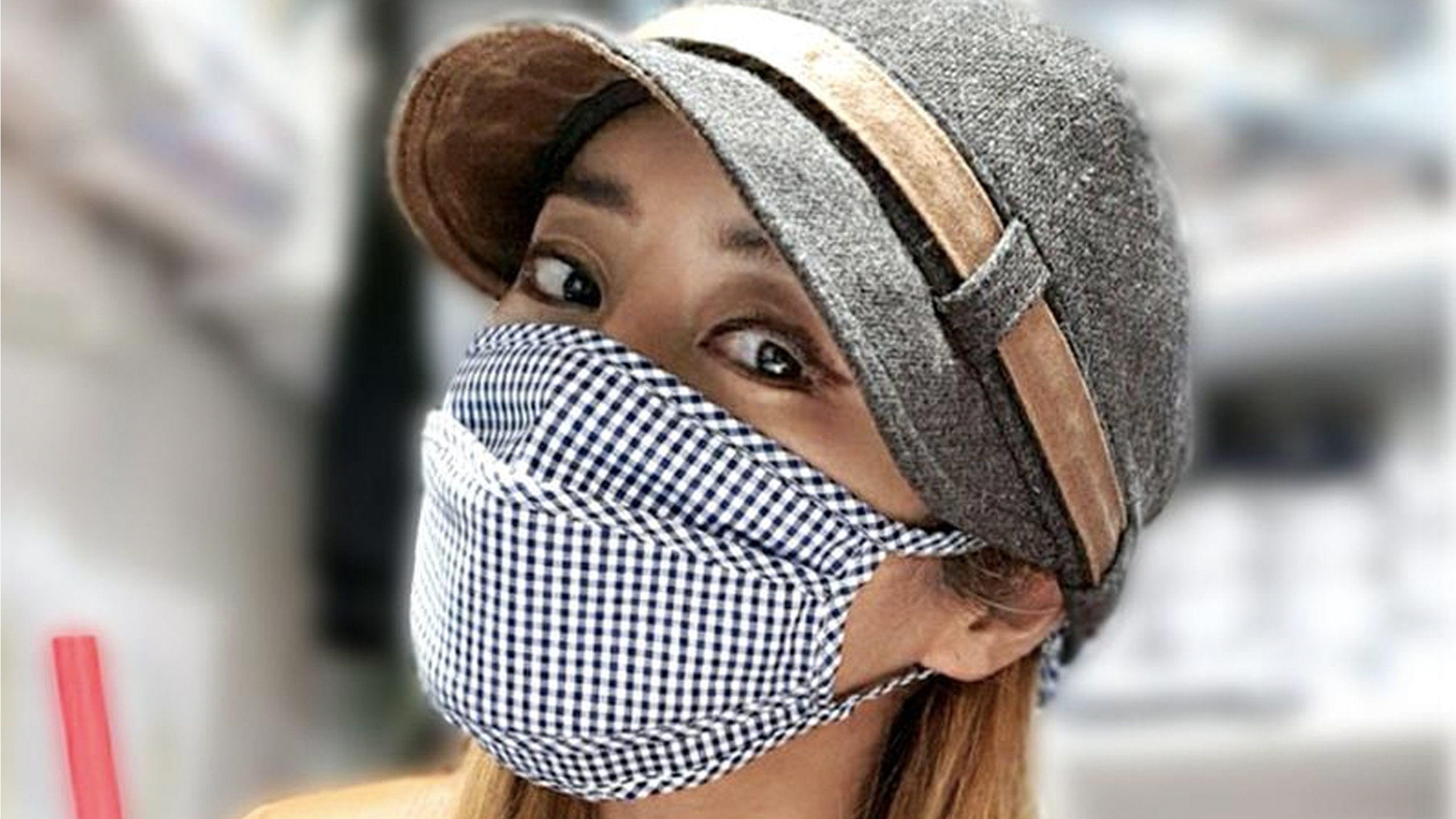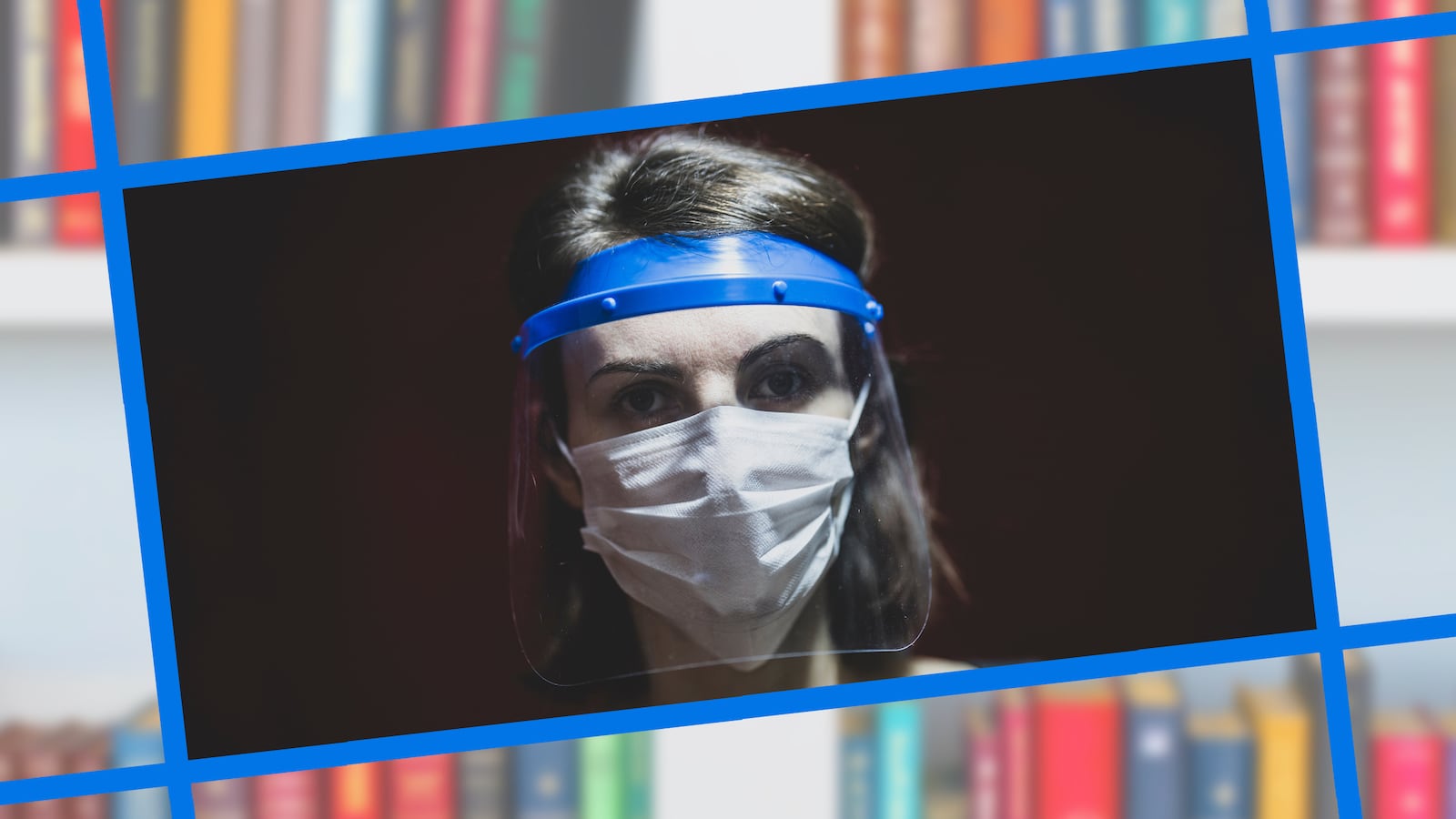We’ve all seen those gut-wrenching images of healthcare workers wearing face shields during their shifts throughout the COVID-19 pandemic. However, as teachers begin to return to school this August and September, educators may be wondering if this is a product that should be on the top of their back to school shopping list this year.
While there are recent studies that suggest that wearing a protective cotton face covering can prevent the spread of COVID-19, according to board-certified internist Dr. Seema Sarin, MD “The Centers for Disease Control and Prevention does not currently recommend use of face shields as a substitute for masks, unless a person is medically unable to wear a face covering or mask.”
A 2014 study published by the Journal of occupational and environmental hygiene shows that “face shields can reduce the short-term exposure of large infectious aerosol particles, but smaller particles can remain airborne longer and can still be inhaled easily [without a mask],” she explains.
With this in mind, Dr. Rodney Rohde, PhD, MS, SV, chair and professor of the Clinical Laboratory Science (CLS) Program, and Associate Dean for Research for the College of Health Professions at Texas State University, says that cotton masks are your best bet, as they provide better protection (thanks to a tight fit) than face shields, when used in conjunction with social distancing, and other public health measures. “Cloth masks fit tight, covering the nose and mouth, which are two major portals for the virus to enter your body,” he adds. “Face shields do not fit tight around these areas.”


Who Should Wear Face Shields?
Generally, a face shield is not necessary for the classroom, as the primary route of transmission for this virus is the respiratory route, according to Dr. Rohde. However, he explains that there may be some exceptions for those who can wear a face shield, particularly special needs teachers and educators of smaller children.
“Teachers may need to consider wearing a face shield in order for deaf students to see their lips and facial movements for communication,” he says. “In those situations, the CDC recommends wearing a hooded shield that extends below the chin, and wraps around the side of the wearer's face to help with respiratory droplet spread.”
Educators of small children may also want to consider wearing a face shield, as these teachers tend to have closer personal contact with their students, according to Dr. Iahn Gonsenhauser, MD, MBA, a doctor of internal medicine, and chief quality and patient safety officer at The Ohio State University Wexner Medical Center. “If you are teaching a kindergarten class for example,” he says, “a face shield will provide worthwhile added protection anytime six feet of social distancing and consistent mask adherence are not maintained.”
Additionally, anyone who is “immunosuppressed, is over 65, has underlying cardiac or lung diseases, diabetes, or anyone that may be at risk for complications from COVID-19 could benefit from the additional precaution of wearing a face shield in addition to a mask,” says board-certified family physician Dr. Georgine Nanos, MD.

How to Clean Face Shields
When it’s time to clean your shield, Dr. Sarin suggests doing so by wearing gloves to carefully wipe down the inside (followed by the outside of the face shield) of the face shield using a cleaner wipe, or a clean cloth saturated with neutral detergent solution.


“Keep plastic face shields away from the sun, because sun exposure can cause them to melt,” Dr. Rhodes explains. “Additionally, keep your shields in their own separate bag, and remember to wash your hands when you take them off, as the shield surface can be exposed to potential droplet deposits.”
“With a proper face mask, physical distancing, and other recommended public health precautions, one really does not need a face shield,” he adds. “However, there is no harm in wearing them with face masks in limited areas and situations (lip reading). One might also want to consider wearing closely fitting goggles or safety glasses, if needed.”
Scouted selects products independently and prices reflect what was available at the time of publish. Sign up for our newsletter for more recommendations and check out our coupon site for more deals. If you buy something from our posts, we may earn a small commission.






